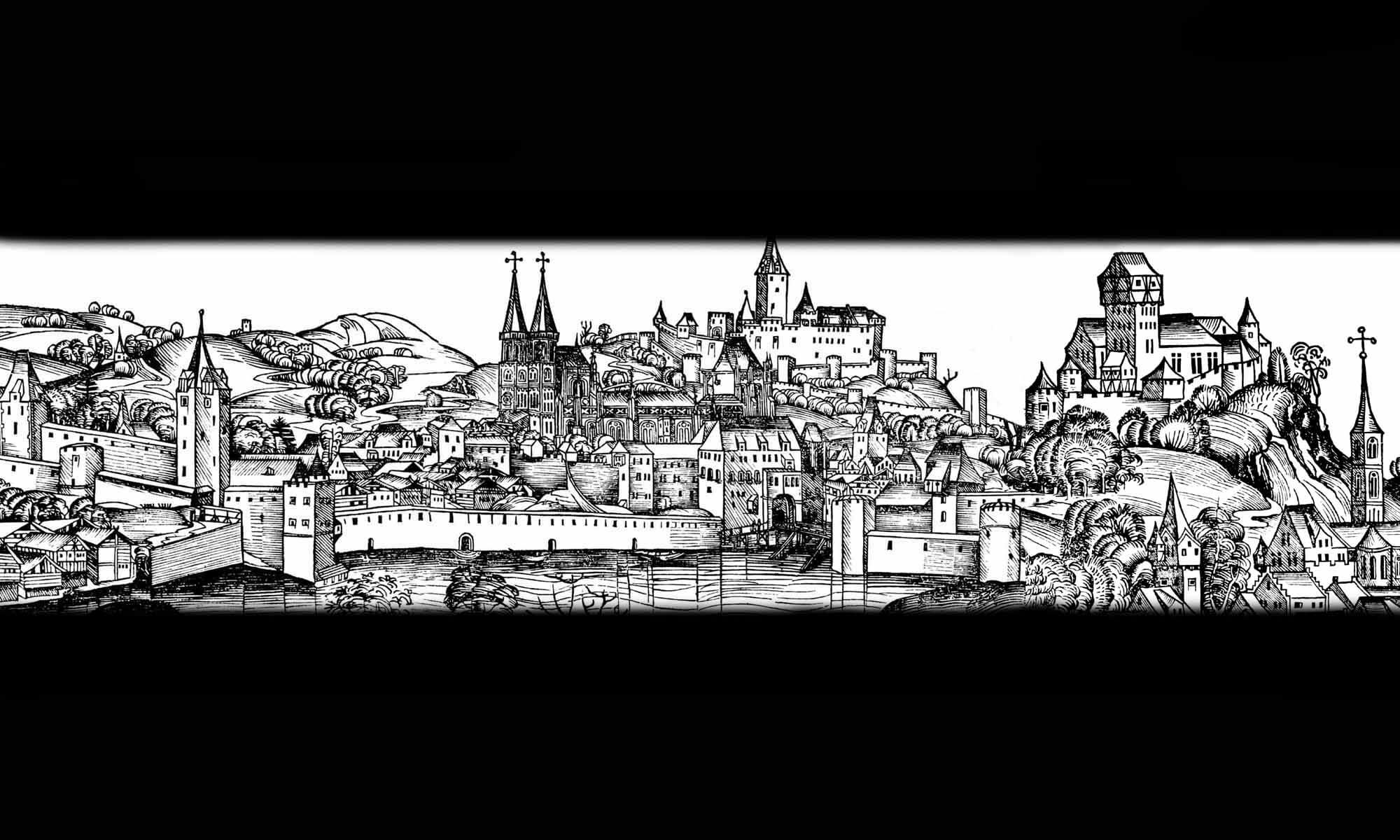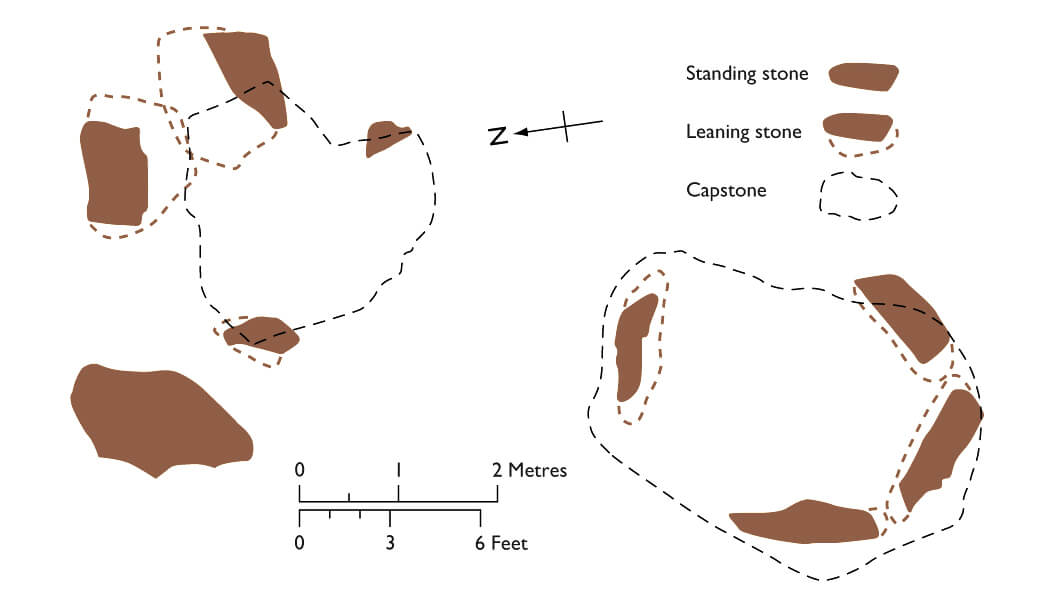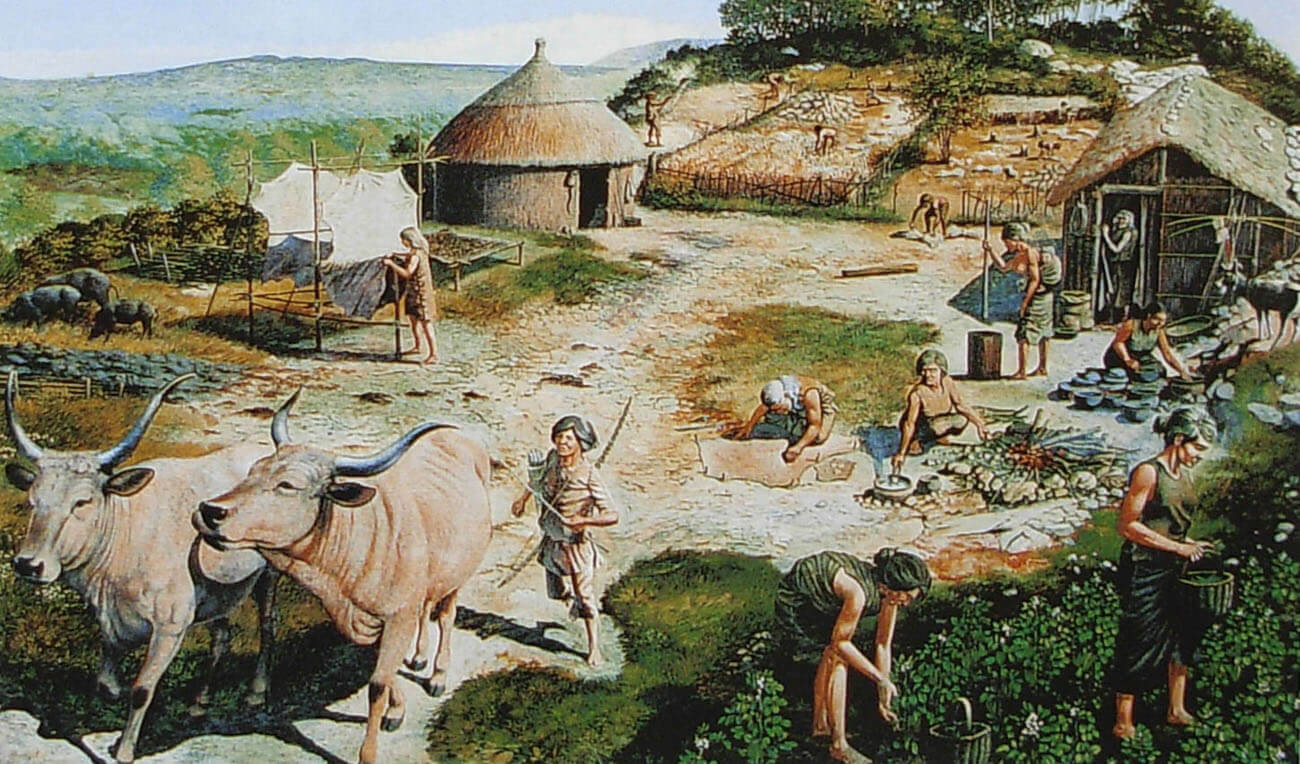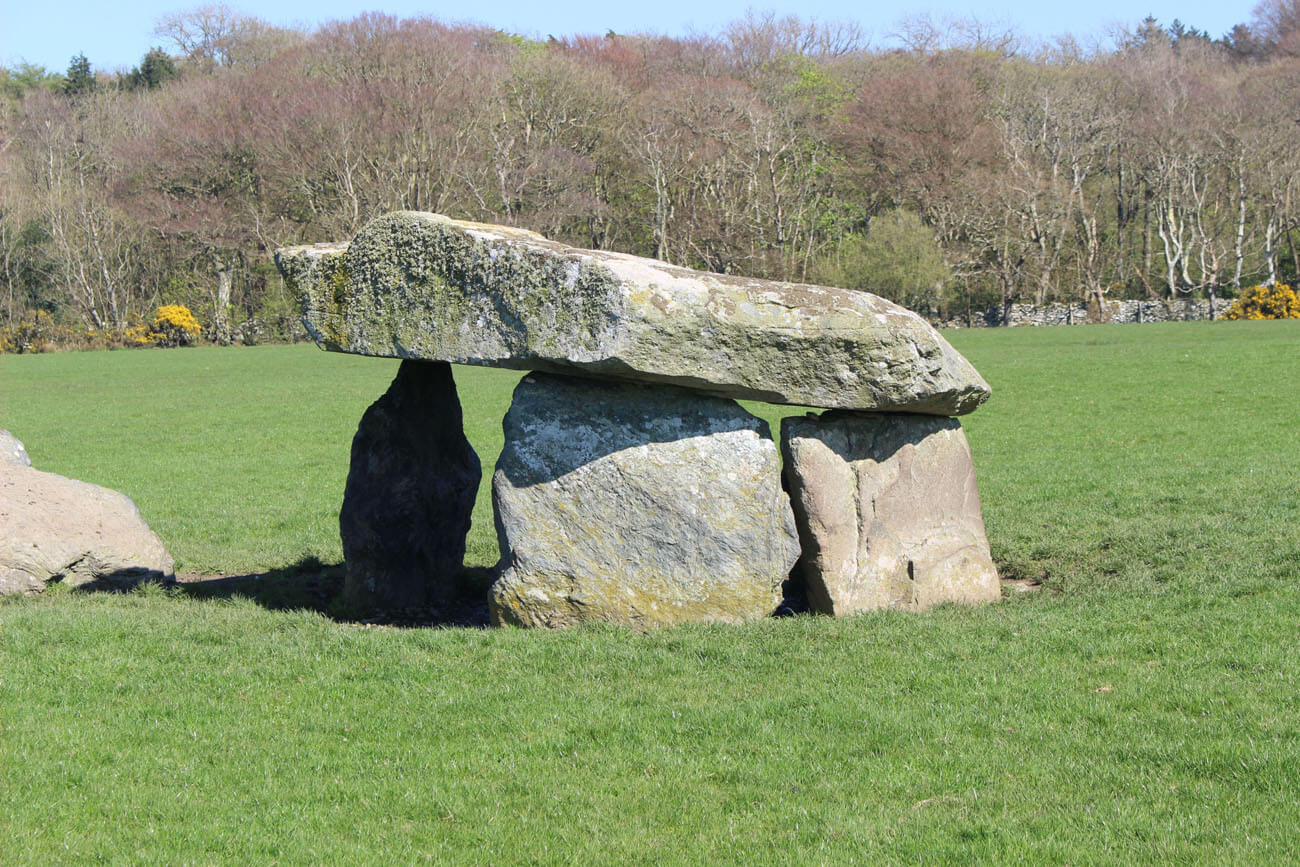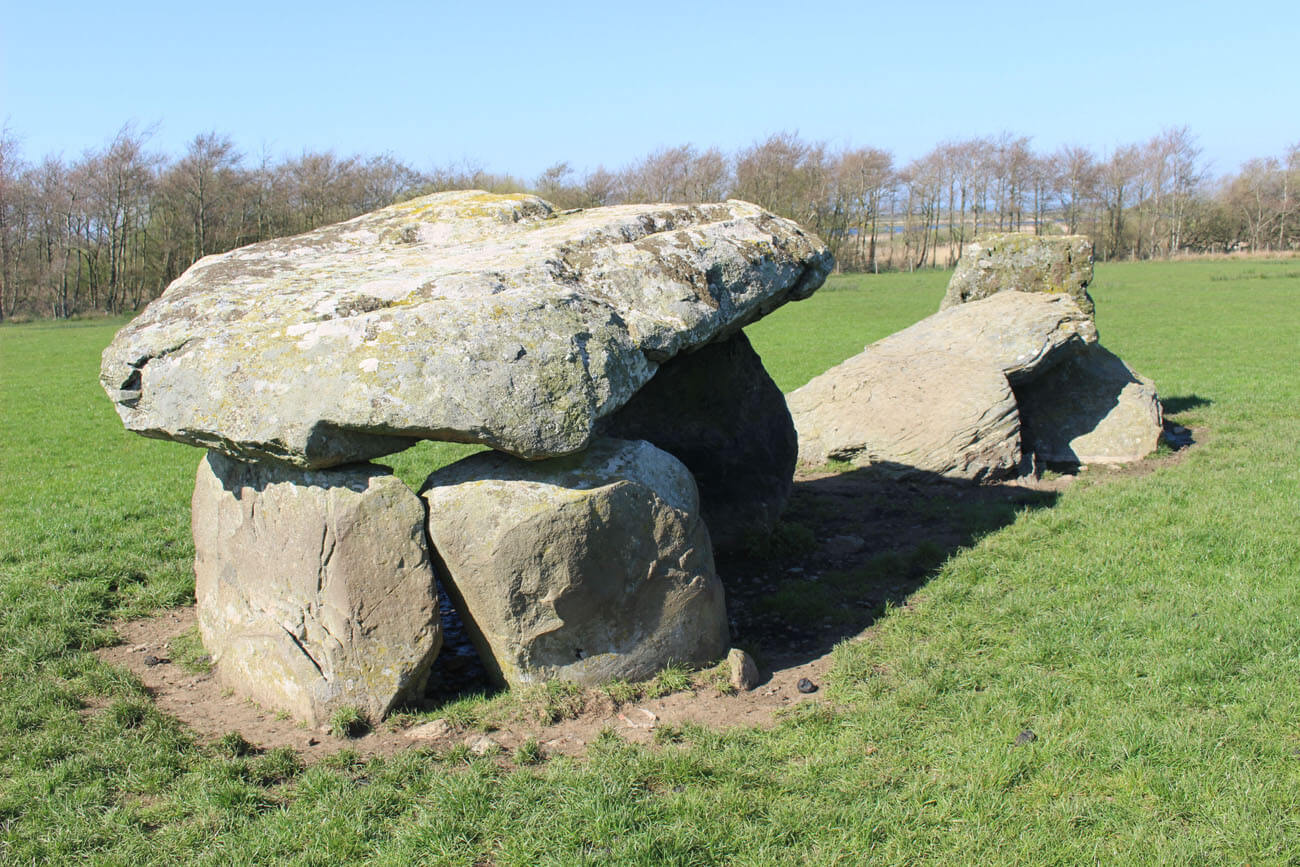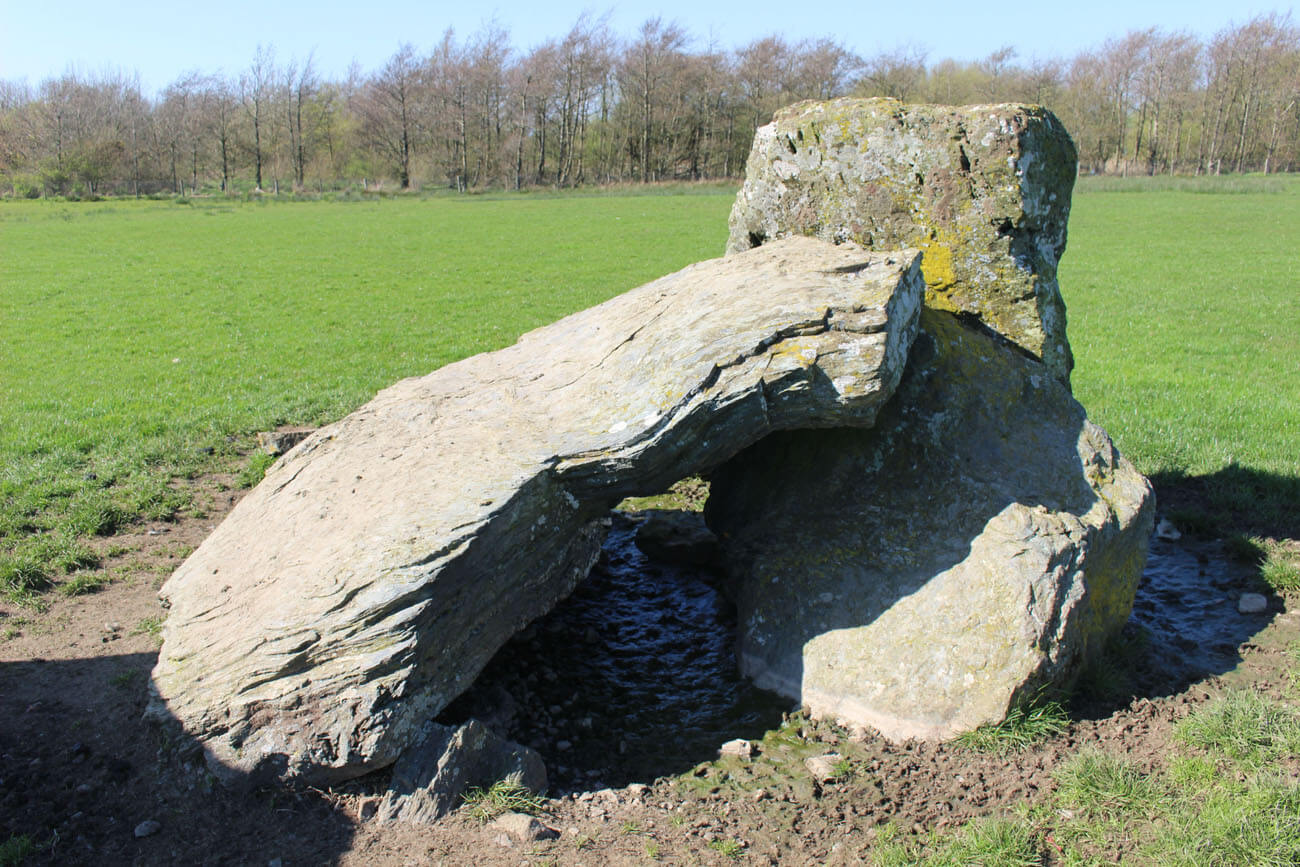History
The Presaddfed tomb was erected during the Neolithic period, around 4000-2000 BC. It served as a collective burial place of the early-agricultural community. The gradual transition from gathering and hunting to more settled agricultural life probably influenced the development of a sense of territoriality and rights to inheritance, and thus the desire to pay tribute to ancestors. A visible manifestation of this aspiration may have been monumental tombs, also used to carry out religious ceremonies in their vicinity. By the 18th century, when the site was first recorded, the burial chambers were already in ruin, although at least one of the chambers may have been used as a shelter or temporary habitation as late as the early 19th century.
Architecture
The tomb consisted of two oval or irregular chambers, separated by a little over two meters, originally covered by a cairn of earth or stones. It is uncertain whether the chambers were part of the same structure, but their relatively close spacing and the oldest written records, which indicate that they were surrounded by a large number of small stones in the 19th century, suggest that both were once covered by a single cairn. Both chambers were constructed from erratic boulders, likely scattered throughout the area by glacial action during the Neolithic period and used for construction without further processing.
The southern burial chamber was capped by a massive boulder measuring approximately 3.6 x 2.4 meters, supported by three stones at the southern end and a single one, more slender stone at the north. All four stones were set vertically with their long sides and sunk into the ground. Smaller stones may have originally been placed between them, forming the remainder of the western wall. The entrance faced east, traditionally toward the rising sun.
The northern chamber was slightly smaller than the southern one. It consisted of at least two stones at the northern end and two more on the opposite side, which once supported a large, flat capstone. If we assume that the northern chamber was simultaneous structure with the southern chamber, then its entrance likely also lay on the eastern side.
Current state
Until now, only the remains of the stone burial chambers remain today, with no visible traces of the cairn that covered them. The southern chamber is more complete, while the northern one has been significantly damaged over the centuries, with its capstone toppled and only two stones that once formed the walls standing vertically.
bibliography:
Castleden R., Neolithic Britain: New Stone Age sites of England, Scotland and Wales, London 1992.
Cummings V., Richards C., Building the Great Dolmens. Excavations at Presaddfed, Anglesey, 2013, Preston 2013.
Haslam R., Orbach J., Voelcker A., The buildings of Wales, Gwynedd, London 2009.
The Royal Commission on The Ancient and Historical Monuments and Constructions in Wales and Monmouthshire. An Inventory of the Ancient Monuments in Anglesey, London 1937.
